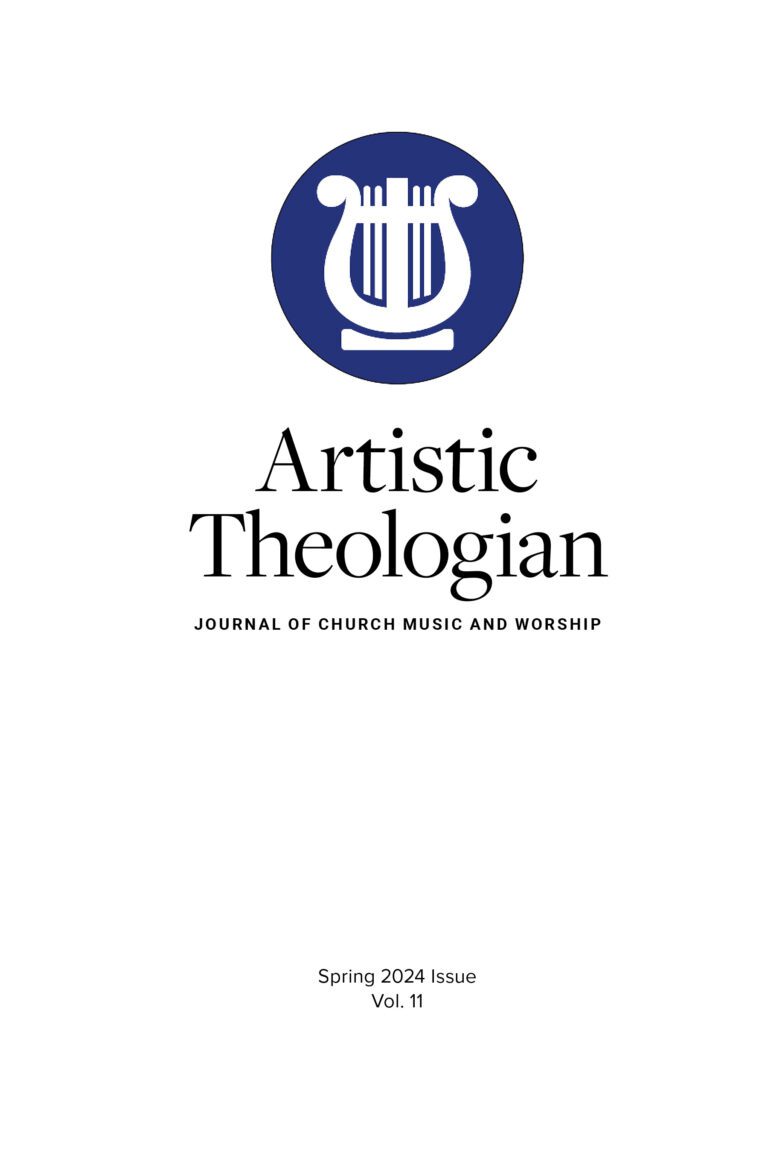
The Relationship of Doxology and Doctrine
Artistic Theologian
Volume 11, Summer 2024
Editor: Joshua A. Waggener
Becoming What We Sing: Formation Through Contemporary Worship Music. By David Lemley. The Calvin Institute Of Christian Worship Liturgical Studies. Grand Rapids, Mi: William B. Eerdmans, 2021. 272 Pp. $26.99.
In Becoming What We Sing, David Lemley (assistant professor of religion at Seaver College, Pepperdine University) argues that “in contemporary worship music … Christian liturgies and cultural liturgies converge” (2). At this intersection of liturgies, spiritual formation occurs. This book sets out to determine how contemporary worship music (CWM) contributes to spiritual formation in the Christian life.
In the first three chapters, Lemley examines the nature and function of music in worship and culture. In chapter 1, Lemley argues that “communion with God is the goal and means of spiritual formation and is the measure of authentic worship” (25). Furthermore, “the words and actions of the worshiping church proclaim its faith and thus shape the faith of participants” (27). Lemley goes so far as to contend that “the church’s song is a sign of their union with Christ and one another, and of their mission to bring ‘everything’ into this loving communion” (45). Music serves as a significant factor in Christian formation in gathered worship.
In the early church, “musical participation was an act of proclamation, articulating God’s salvation history, that established singers as actors in God’s story” (61). Because singing played such a pivotal role in the church, “only the community that gathered at the Lord’s table would create the songs of the early church” (67). In Augustine’s context, “the experience of music connected head and heart and was a vehicle for forming and sustaining the boundaries of orthodoxy” (75). The church’s songs call the community to the collective work of worship and witness in the bounds of the faith once for all delivered to the saints (Jude 3).
Lemley reminds the reader that, for all the benefits music can provide, it can also become a distraction in itself, for “in music … there is a temptation to want beauty without God” (70). Sometime, there can be subtle shifts in focus that malform the church as it sings. Lemley cites “the frequent and growing use of first-person in English hymnody, after Watts” as one such shift (94). Music (text and tune) must be carefully evaluated, understood, and employed.
From the Latin phrase lex orandi, lex credendi, lex vivendi, chapter 3 describes the connection between the ideals of the liturgical ordo and the cultural liturgies of pop music. Just as CWM functions in a Christian liturgy, “pop music … is a part of a cultural liturgy, encountered through embodied practices, training the imagination and tuning the desires of listeners” (102). Questions of worldview, values, the nature of “the good life,” and identity are central in both Christian and cultural liturgies (105).
Chapters 4 and 5 serve as a pivot from the broader conversation around music to the development of CWM and the “pop ordo.” Chapter 4 tells the story of the rise of CWM and the Praise & Worship movement. In this movement, music takes on a sacramental nature. For music to be sacramental, it “must serve (or be) a symbol with the capacity to receive the full range of worshipers’ experiences and bring them into contact with the central mysteries of faith” (129). Interestingly, “to authentically worship in CWM, a worshiper or congregation is formed by participation in a community bound by taste and patterns of consumption” (151). In this way, music is both expressive and formative.
Chapter 5 is a case study of the band U2 that explores the ordo of pop and the “kinds of lives the ordo might promise” (157). Lemley contends that U2’s intent is “to inform a certain way of seeing the world and empowerment for a certain ethical vision in everyday life” (179). Whether texts and tunes (and their “intent and content”) are capable of achieving the desired formational outcome remains to be seen (179).
Chapters 6 through 8 draw the conversation to a conclusion by examining the church that CWM built and discussing the function and future of CWM in the formative, liturgical practices of the church. Lemley concludes that “the criteria of authentic worship performance and the experience of a flow liturgy work together to form habits of practice that shape a particular theological imagination” (190). However, just as “a steeple can never constitute a church … the sonic spaces of CWM are fully capable of hosting the event of participation in God’s self-communication, but they cannot be mistaken for worship itself” (201). In the end, “a musical experience in itself … does not attain worship in spirit and truth” (219). However, a “participatory, creative response can help facilitate the critical connection between the sacramental symbol and the daily domestic” (215). The result of Lemley’s study is a CWM liturgical-formation matrix that describes “a worshiper’s sense of relationship to God” and “the participant’s desired individual or social identity in relationship to [their] context” (228). The author suggests that local church composition may provide an interesting path forward as individual churches produce songs that are both expressive and formative of their shared faith and particular context.
This work is a fascinating exploration of the formative function of contemporary worship music that will provide pastors, worship leaders, and scholars with tools to evaluate the songs they sing and employ music in a meaningful way for the good of the church and the glory of God.





